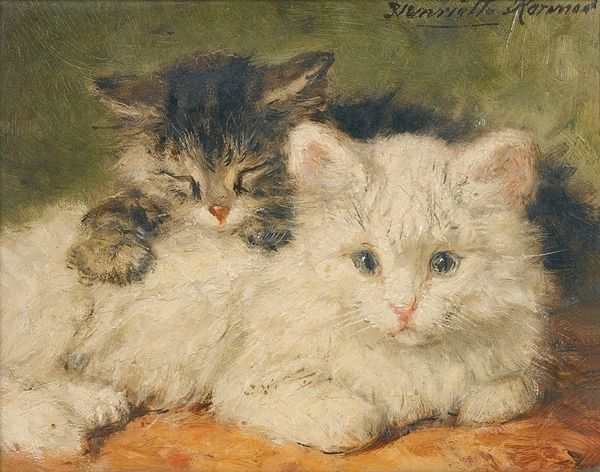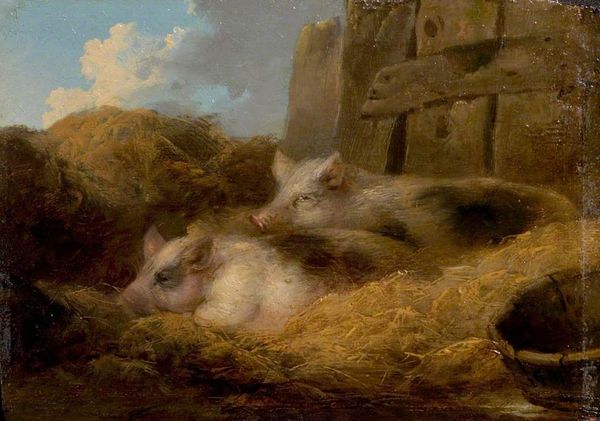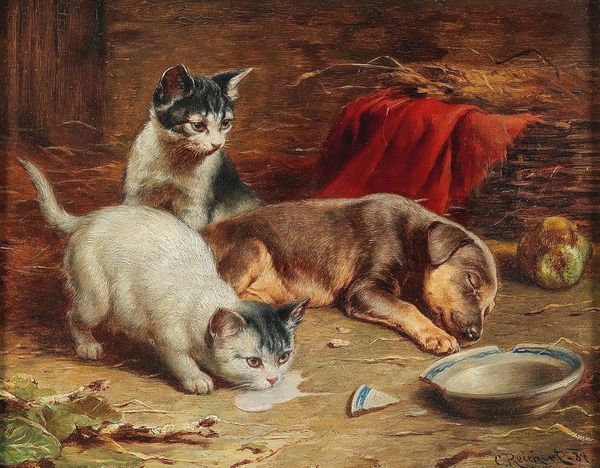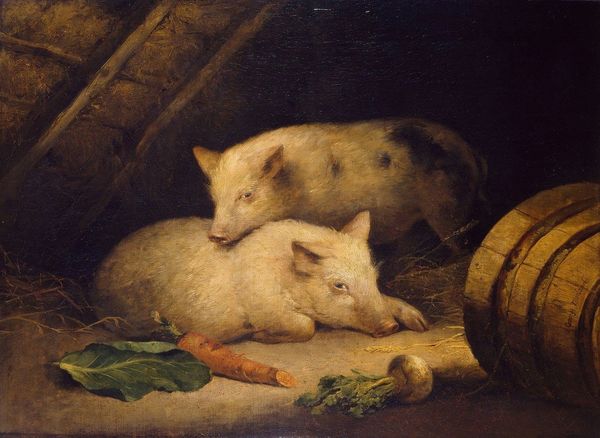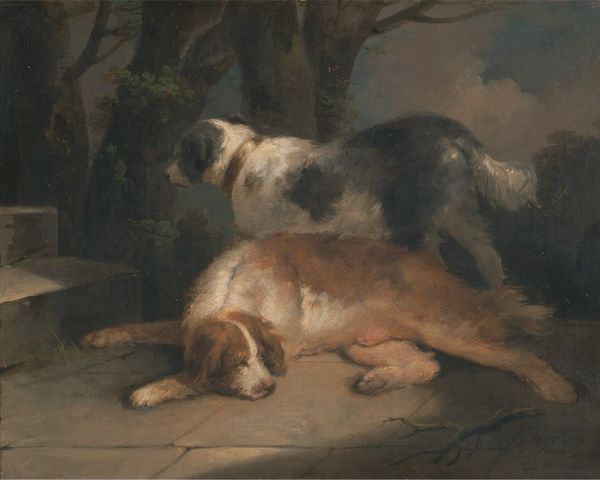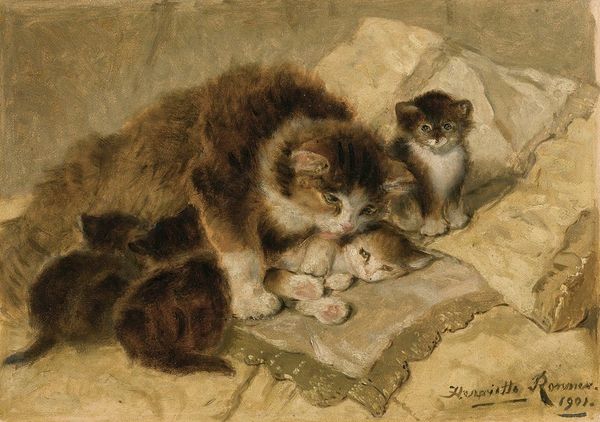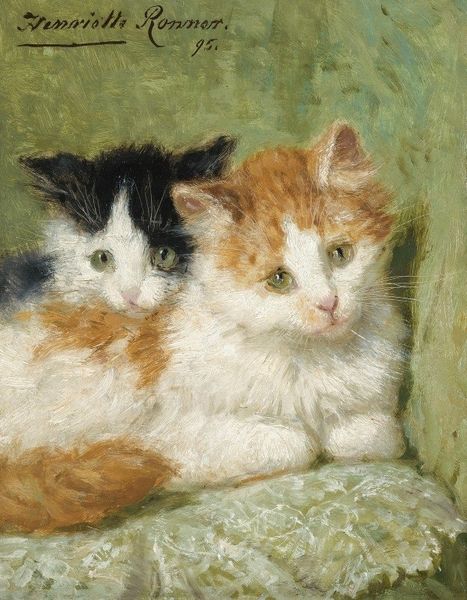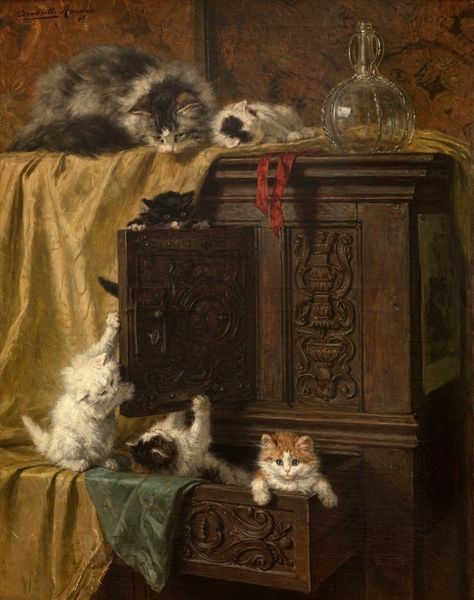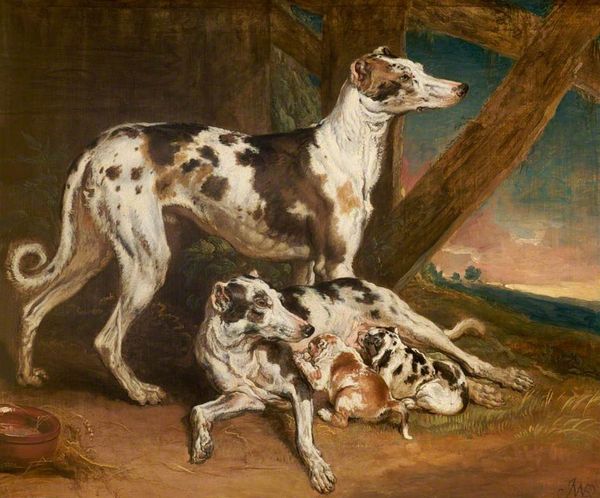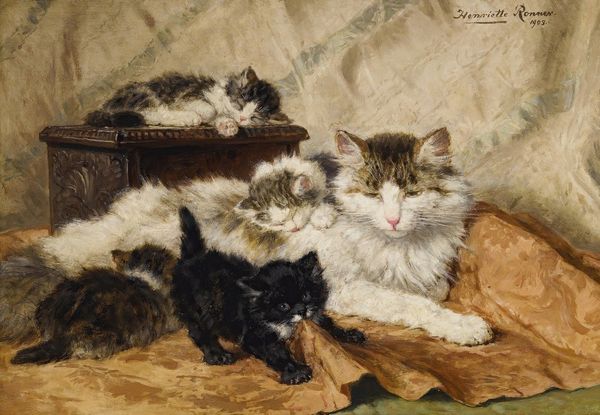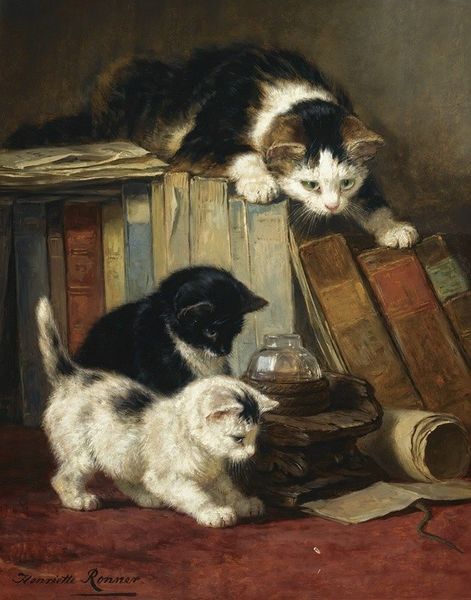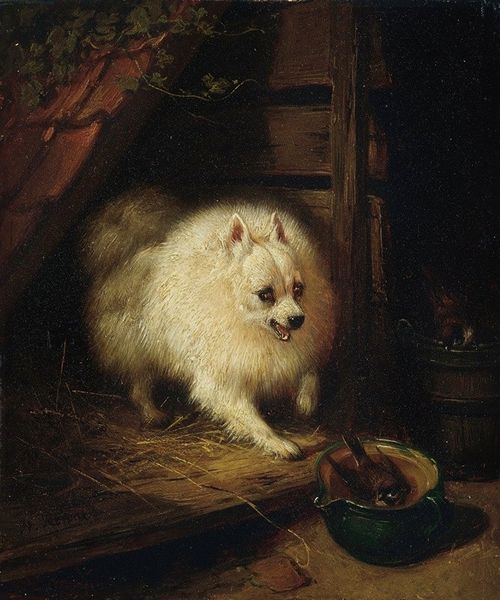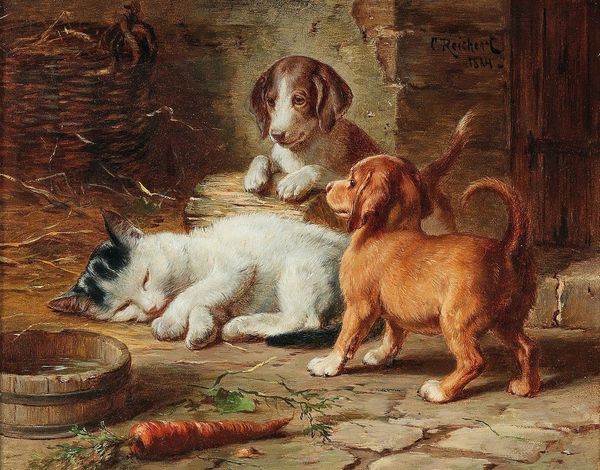
#
vegetal
#
wildlife photography
#
animal drawing
#
possibly oil pastel
#
green background
#
botanical photography
#
animal portrait
#
animal drawing portrait
#
animal photography
#
natural
Copyright: Public domain
Curator: Good morning. Let’s talk about George Morland's "Guinea Pigs" from 1792. The subject is…unexpected, isn't it? Editor: It is! I mean, it's a still life, sort of, but instead of fruit, we have these adorable little rodents rendered in, well, what looks like meticulous detail, maybe oil on canvas? What strikes me most is the textural contrast – the smoothness of their fur against the rough plant matter. What's your perspective on this, seeing past the fluffy faces? Curator: Consider the materials available to Morland, and what he chooses to depict. Oil paint wasn't universally accessible. Then, observe *what* he paints: not lords or ladies, but common guinea pigs, within a constructed setting, likely for sale as pets. This pulls the curtain back on consumption habits of the time. It almost reads as marketing material! Why choose such mundane creatures? Editor: So, it's not just *what* he’s painting, but *how* and *why* that reveals the broader story about materials and societal values at the time. But are the guinea pigs merely commodities? Or do you think there's a comment here about the relationship between humans and the natural world, shown through the act of domestication? Curator: Both. This domesticated ‘natural world’ is contained, commodified, consumed. And it's represented using expensive materials and labor, for an audience able to buy paintings and pets. Consider that in contrast to the labor involved for his more well-known stable scenes, catering to similar clients. How do production methods compare to the animal itself? Does this tell us about changing rural social structures at the end of the 18th century? Editor: Wow, I hadn’t considered the choice of materials as being linked to economic status, nor its potential to expose cultural values. It is more than meets the eye. I thought it was a charming painting of cute animals, but now I see it’s so much more complicated. Curator: Exactly. It’s a lens through which we can view labor, consumption, and our relationship with the 'natural' world during that period, captured by Morland's choices in material and subject matter.
Comments
No comments
Be the first to comment and join the conversation on the ultimate creative platform.
